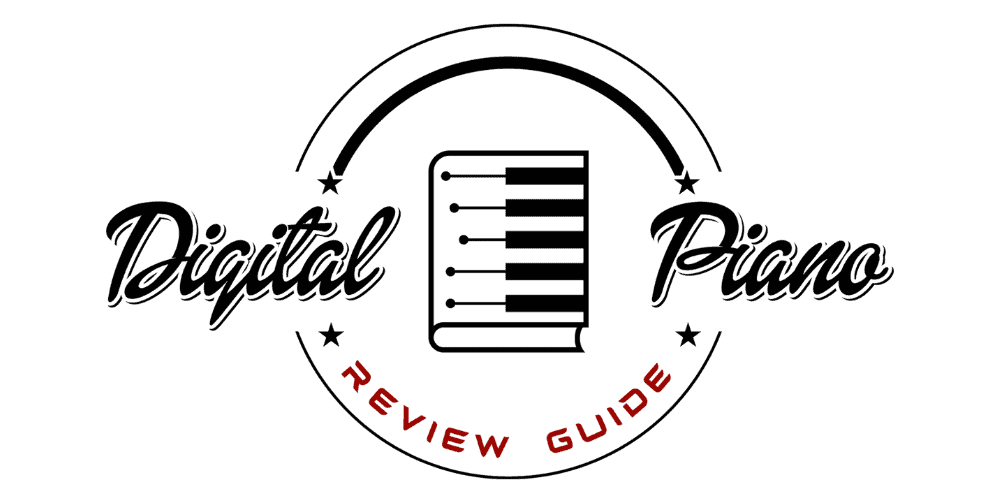Casio CDP-230 review

Whenever you’re looking to buy a digital piano for basic piano learning, playing multiple gigs, or simply for having fun with your friends, you need to have a reliable piano that’s going to meet several of your needs.
Due to this, Casio has created an original product that borrows all of the most important specs of the new CDP-130, such as the dual-element AHL sound engine and the 88-key Scaled Hammer-Action keyboard, and expanded it by adding lots of features and entertainment modes that you would usually find in a digital keyboard.
The new product is called CDP-230 and is one of the latest entries in Casio’s digital piano catalog. Do note that internationally, the Casio CDP-230 can sometimes be referred to as the Casio CDP-230R. Understand that there’s absolutely no difference in terms of the quality of the piano you’re getting between the Casio CDP-230 vs CDP-230R. The “R” is something that can be added or omitted at Casio’s whim. These are the exact same instrument, and one is not more advanced or upgraded than the other.
Below, please compare the Casio CDP 230 to other digital pianos, including the relatively new Casio CDP-S350.
| Photo | Model |
|---|---|
| Casio PX-S1100 | |
| Casio CDP-S360 | |
| Yamaha P-45 | |
| Yamaha NP12 | |
| Yamaha P-515 | |
| Yamaha NP32 | |
 | Korg LP-380 U |
 | Yamaha DGX 670 |
So, does the CDP-230 live up to the hype? Well, let’s dig into this instrument deeper and find out.
- You may want to read our Casio CDP-240 review here!
- You may also want to read our Casio CDP-S360 review, as well!
A GREAT VALUE
The Casio CDP-230R is available in two finishes (Black or Silver) and ships for the online value price of approximately $449, with the following equipment:
- CDP-230R 88-key digital piano
- Casio SP-3 footswitch-style sustain pedal
- Music stand
- AC adaptor
- Song book

Below, please take a moment to view some of our favorite digital pianos currently available for sale online, and then see how well they compare to the Casio CDP-230:
| BEST SELLERS |
|---|
| 1) Yamaha P-515 |
| 2) Casio PX-S3100 |
| 3) Casio PX-870 |
| 4) Roland FP-E50 |
| 5) Roland FP-30X |
Both versions can be mounted on the matching CS-44P furniture-style stand, which is sold separately for $119, so that you can transform your piano in a nice piece of home décor.
The CDP-230R features a compact and lightweight body (only 25 pounds), which allows users to easily carry it to and from rehearsals, gigs, and live shows, or just simply to and from your home or dormitory.
The cabinet itself includes two big 8W Full Force Sound Speakers on each side, a huge LCD backlit display on the center, and several buttons to manage all the available options. A pitch bend wheel is placed on the left too, while the music stand slot is located right over the display.
On the rear side, we find all the connectivity options provided by Casio, such as the USB-to-host port (for MIDI applications and using the piano as a master controller), the sustain jack, an audio input (for connecting an external MP3 player), a mic input and the power jack.
All the multimedia modes are supported by the USB and SD card slots, which allow you to plug external storage devices for both recording and playback media.
THE INTERFACE
The main interface includes a Power button, a Volume knob, and the Rhythm/Song Controller buttons, which are helpful for playing along with the various available accompaniments.
The Tempo up/down, Recorder/Sampling, Rhythm Editor and Metronome/Beat buttons are up next, while on the right side we find four buttons for managing the Rhythm, Tone, Song Bank and Card modes.
A seven-button section is used for both Registration and Step-Up Lesson modes. The former helps users to store their favorite sounds, which can be instantly recalled by pressing the selected button. The latter is a great feature for students and beginners, as it allows you to listen to a song or exercise, watch the notation and fingering on the display, and then try to replicate the same notes remembering what happened before.
The Music Challenge is a great way to engage users too, with trials that can be very exciting for the younger students.
All those multimedia features wouldn’t be useful if the main core of the instrument, in this case the piano module, was not satisfying for its intended role. Thankfully, Casio has created a product that is both good for learning the piano and enjoying all these great digital modes.
A HUGE SOUNDS COLLECTION
The Casio CDP-230R features a revamped version of the dual-element AHL sound source which offers 700 tones, 200 different rhythms and a 150+ song database. This is enriched by an integrated DSP with 10 reverbs, 5 choruses and the Hall mode, which can be used on selected piano sounds and recreates the warm acoustics of a real grand piano.
The main piano sounds are the same ones included in the Casio CDP-130, with the same amount of polyphony (set to a maximum of 48 notes). It’s important to specify that when playing the stereo piano samples, the max polyphony unfortunately drops to 24 notes, which is still decent but does not allow students to practice on more complex pieces of classical music. However, this is a common issue among many digital pianos under $500.
Again, from the CDP-130, we find the same 88-key Scaled Hammer-Action Keyboard, which is a great way to start learning the piano basics despite being a bit noisy while playing certain keys, especially at a lower volume or using the headphones. This keyboard offers different weights for the lower and higher zones, just like a real acoustic piano.
The CDP-230 features four different touch response presets to adjust the dynamics in order to customize the feeling that you get if playing louder or softer. You can pick from one of the three available sensitivity levels, or disable the custom key responsiveness and use the standard one instead. The dynamic range is certainly one of the best available in this price range–much greater than other competitors such as Korg, Williams or Yamaha digital pianos.
AN EASY WINNER
It’s time to compare the new CDP-230R with other similar products, such as the Casio CDP-130 ($399), the Casio PX-150 ($499), and the Yamaha P-35 and the P-45 (both sold for $449).
As said before, this Casio piano is basically an expanded version of the CDP-130, which includes all its main specs, so choosing between these two products is only a matter of personal taste towards the several of the digital features added in the CDP-230R.
Is it worth spending $50 more to buy this product to get 690 more sounds, 200 rhythms, 150+ different tunes, SD-card and USB slots for media playback and recording, the Casio’s renowned Step-Up Lesson system?
Well, to be frank, yes.
Of course, if you’re not interested in those features, you’d be better off opting for the CDP-130 and spending the additional $50 to buy a proper piano-like damper pedal, which would allow you to get a more realistic piano experience.
As for the comparisons with both Yamaha’s, the same considerations made in our Casio CDP-130 review apply here, with few exceptions. While the AWM Sound Engine of P-35 still offers a lower polyphony than CDP-230R (32-note vs. 48-note) and the P-45 does have a higher polyphony (64-note vs. 48-note), the CDP-230 does not offer support for the half-pedal functionality.
The lack of the P-45’s Duo mode, one of the biggest flaws of the CDP-130, is somehow compensated by the great Step-Up Lesson system included in the CDP-230R, which is a good tool for students looking to approach to piano.
You may be better off going for Casio’s 88-key Scaled Hammer Weighted Keyboard, which is less noisy, more balanced and well-weighted than Yamaha’s standard GHS keyboard, used in both P-35 and P-45.
Moreover, at the same price of these two pianos, you will get all those aforementioned multimedia features and capabilities that you would find in other products from Yamaha, such as the more expensive DGX-series (click here to see our Yamaha DGX-650 review).
If you’re aiming for a more professional product and you don’t care about multimedia features, then you may consider buying the new Casio Privia PX-150, which is a big step forward in recreating a realistic piano experience while maintaining an affordable price in a compact, lightweight and portable frame.
This product from Casio includes the renowned 88-key Tri-Sensor Scaled Hammer-Action Keyboard, now with ebony and ivory feel keys, the Multi-dimensional Morphing Air Sound Engine with a 4-layer stereo piano sample, 128-note maximum polyphony, the Hammer Response and Damper Resonance simulator, along with other great professional features that make the PX-150 the perfect choice for intermediate and professional musicians.
With a $499 price and a difference of $50 between the two models, the choice is up to you: if you prefer the digital features over a more realistic piano playing experience, then you’d better opt for the CDP-230. But, if you care about piano fidelity and can afford this investment, the PX-150 might be the choice that you find yourself more content with years down the line.
NOTE: A couple of the digital pianos mentioned in this article have been discontinued and replaced with newer models. To read our reviews on the newer models, please click the following below:
CONCLUSION
The CDP-230 is the perfect evolution of an already great digital piano for beginning players, as it offers a huge bunch of multimedia capabilities in addition to all the original features of the Casio CDP-130.
If you’re interested in all these options, by adding only $50, you’ll get a more complete product that will be helpful not only for studying piano, but also having a fun time with your friends on the weekend.
RATING: 5/5
If you enjoyed this review, please like us on Facebook!






